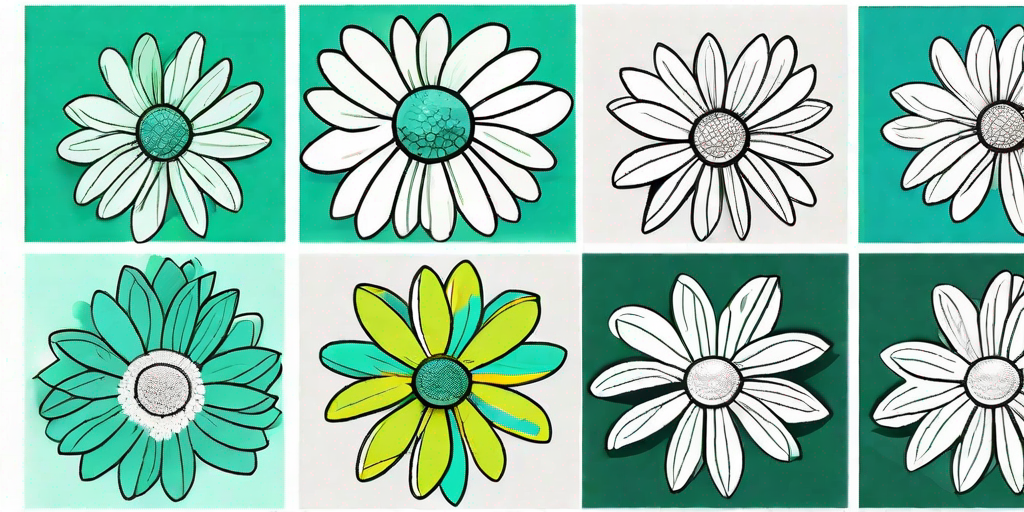
The daisy, a flower so iconic that even a child can sketch it, has been the muse of poets, artists, and dreamers for centuries. Its simple charm and radiant beauty have made it a staple in gardens and bouquets worldwide. But did you know that there are more than 20,000 species of daisies? That's right, this seemingly humble flower has quite a diverse family tree. So, buckle up, flower enthusiasts, as we embark on a delightful journey into the world of daisies.
What Makes a Daisy, a Daisy?
Before we dive into the specifics, let's clear up what exactly makes a daisy, well, a daisy. You see, it's not just about the white petals and yellow center that most of us picture when we think of a daisy. In fact, daisies come in a variety of shapes, sizes, and colors.
The term 'daisy' is used to describe a wide range of flowering plants in the Asteraceae family. This family, also known as the aster, daisy, or sunflower family, is one of the largest families of flowering plants, with over 20,000 species spread across 1,620 genera. The defining characteristic of this family is the inflorescence, a unique flower structure that consists of a central disc of tiny, tightly packed flowers (disc florets) surrounded by a ring of larger, typically more colorful flowers (ray florets).
The Anatomy of a Daisy
Now that we've established what a daisy is, let's take a closer look at its anatomy. The most recognizable part of a daisy is its flower head, which is not a single flower, but a composite of several small flowers, or florets, arranged in a specific pattern.
The center of the flower head, known as the disc, is composed of numerous tiny disc florets, which are typically yellow. Surrounding the disc is a ring of ray florets, which are what we typically think of as the 'petals' of the daisy. These ray florets can be white, yellow, pink, red, or even blue, depending on the species.
Identifying Different Types of Daisies
With so many species of daisies, it can be a bit overwhelming to try and identify them all. But don't worry, we're here to help. Here are some of the most common types of daisies that you might come across.
The Classic: Bellis perennis
The Bellis perennis, commonly known as the common daisy or English daisy, is the quintessential daisy. It has a yellow disc surrounded by white ray florets and is native to western, central, and northern Europe. This daisy is a perennial plant, meaning it blooms year after year, and is often used as a decorative ground cover.
The Cheerful: Gerbera Daisy
The Gerbera daisy, also known as the African daisy, is a vibrant and colorful daisy native to South Africa. It comes in a wide range of colors, including yellow, orange, white, pink, red, and purple. The Gerbera daisy is a popular choice for bouquets and flower arrangements due to its large flower head and long vase life.
How to Grow Daisies
Now that you're familiar with the different types of daisies, you might be wondering how to grow them. Fortunately, daisies are relatively easy to grow and care for, making them a great choice for both novice and experienced gardeners.
Choosing the Right Location
Most daisies prefer full sun, meaning they need at least six hours of direct sunlight each day. However, they can also tolerate partial shade, especially in hotter climates. Daisies also prefer well-drained soil. If your soil is heavy clay or tends to stay soggy, you might want to consider growing your daisies in raised beds or containers.
Planting and Care
Daisies can be grown from seeds, seedlings, or divisions. When planting daisies, make sure to space them about 1 to 2 feet apart to allow for proper air circulation. Water your daisies regularly, but be careful not to overwater them, as this can lead to root rot. Daisies also benefit from regular feeding. Use a slow-release, balanced fertilizer in the spring to promote healthy growth and abundant blooms.
FAQs
Are all daisies white?
No, daisies come in a variety of colors, including yellow, pink, red, and blue. The color of a daisy depends on its species and variety.
Are daisies perennials?
Yes, most daisies are perennials, meaning they bloom year after year. However, there are also some annual and biennial species of daisies.
Can daisies grow in pots?
Yes, daisies can be grown in pots or containers. This can be a good option if your soil is not ideal or if you have limited garden space.
Conclusion
And there you have it, a comprehensive guide to identifying and growing daisies. Whether you're a seasoned gardener or a budding flower enthusiast, we hope this guide has given you a newfound appreciation for these delightful flowers. So, the next time you see a daisy, take a moment to admire its simple beauty and remember, in the words of the famous botanist Luther Burbank, "Flowers always make people better, happier, and more helpful; they are sunshine, food and medicine for the soul."















